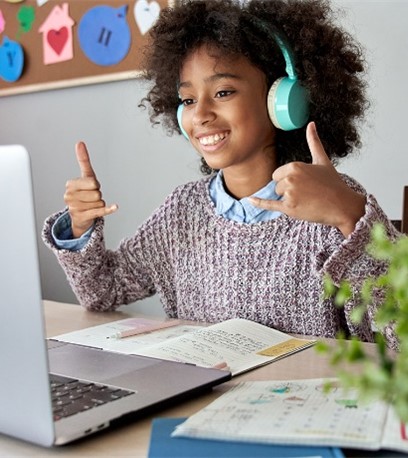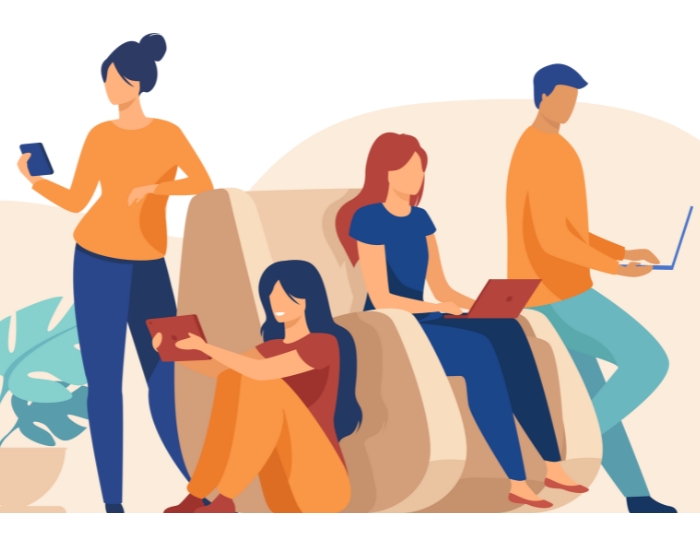Parenting now extends into the vast landscape of online spaces, bringing new challenges. Our children may face situations they are unprepared for, with external influences shaping their confidence and safety. The digital age expands the scope of parenting, requiring us to navigate this online world alongside traditional parenting.
Online interactions, like those in physical spaces, present distinct challenges: prolonged exposure to content, heightened emotional responses, and expanded social connections. Issues faced by children offline, such as bullying, are replicated and amplified online, extending the harm into their homes and intensifying emotional impacts.
Children can be harmed by both familiar individuals and large groups of unknown entities online. ‘Dogpiling,’ where many people target one individual, is a notable issue. Bullying content often goes viral, exacerbating the situation.
While harmful behaviour’s nature remains consistent, its digital occurrence highlights the need for awareness and proactive measures to address these unique online challenges for children and young people.
Types of online harm and risks
Online harm and risks can take many forms and impacts individuals in different ways. Some risks are visible and easy to identify, while other instances can be subtle or hidden. Below is an overview of some of the more common risks that come with being online. This list is by no way exhaustive and we strongly encourage all parents and caregivers to spend time exploring and understanding the challenges young people may face online.
Bullying has found a new platform, manifesting in various and often alarming forms online. From hurtful comments to the unsettling use of deepfakes (images or videos of one person altered into someone else’s likeness) and sharing of harmful school fight videos, the repercussions of online actions are now more tangible than ever. This issue goes beyond mere trivial encounters; the classification of online bullying holds a key role in shaping education initiatives and anti-bullying policies. Broadly defined as repetitive harassment on digital devices, online bullying deserves our attention due to its far-reaching effects on the wellbeing of those involved.
In the quest for online recognition, especially among peers, young people resort to diverse strategies. With personal mobile devices at the forefront, incidents like school fights are frequently live-streamed or promptly uploaded and the rise of deepfakes adds another layer to the complexity of online interactions. Involving the manipulation of facial features, mannerisms, and speech flow in images or videos, deepfakes have been weaponised to harm individuals, including using innocent faces in explicit or illegal videos. Once these manipulated videos circulate online, their removal becomes nearly impossible, causing significant harm to those depicted.
Exploring one’s curiosity about bodies, relationships and sex is a natural part of the journey to adulthood. While pornography consumption is not a new phenomenon, what has evolved is where young people turn to explore these aspects of their lives. The internet has made this type of content more accessible and readily available. It’s important to recognise that not all pornography use is inherently problematic; however, emerging evidence points to a growing number of young individuals displaying signs of problematic use. This includes concerns such as a diminished ability to engage in physical, intimate relationships and altered perceptions of what constitutes a healthy relationship. The impact is substantial, shifting the foundation of sexual relationships from mutual respect and connection to one based on power dynamics and fantasy.
In a recent study, a staggering 82% of young participants acknowledged that exposure to pornography fosters unrealistic attitudes toward sex. Furthermore, there are indications that regular consumption of pornography among young people may be linked to an increased likelihood of displaying sexually coercive and aggressive behaviours in their own relationships. As we navigate this evolving online landscape, it becomes crucial to foster open and informed discussions surrounding the implications of pornography consumption on the wellbeing and dynamics of young individuals.
Grooming is the process by which a perpetrator prepares a child, significant others and the environment to enable sexual abuse of the child. Groomers do not need to meet children face-to-face to abuse them. They can exploit children by persuading them to take part in sexual activity online.
The online world provides opportunity for groomers to:
- Cast the net wide, gaining access to more children – all are potential victims. The online environment makes it easier for groomers to target several children at once.
- Take advantage by pretending to be someone they are not. For example, pretend to be another child with similar interests who the potential victim can readily relate to.
- Develop relationships quickly – online grooming chats can develop in less than 20 minutes.
- Target susceptible individuals based on usernames and comments which have flirtatious or sexual connotations.
- View public comments that suggest a child has low self-esteem or is vulnerable.
- Observe a limited or non-existent network of family and friends – an essential support network which could protect a child.
- Remain anonymous.
Keeping kids safe online
Children and young people find the internet an easy place to explore their identity, to challenge adult norms and boundaries, experiment with relationships and practice a range of behaviours. While this can be positive, unfortunately, many of the negative consequences and implications of these things are amplified online.
Research conducted by Netsafe identified nearly 19% of New Zealand teens have experienced an unwanted digital communication that had a negative impact on their daily activities. While the challenges children and young people face varies depending on their age and what they do online, some of the key challenges every parent or caregiver should know about are online bullying, unwanted contact, social media, sexting and inappropriate content.
Research shows that parents are critical to the success of young people becoming safe, confident and capable in their use of digital technology. Netsafe have put together a guide to help parents talk about online safety.

Regular proactive conversation at home helps to minimise the damage if things do go wrong online. In addition, the seven steps from Netsafe’s Online Safety Parent Toolkit have been designed to enhance digital knowledge and have been developed specifically with parents in mind.
Dive into Hector’s World here.
HECTOR'S WORLD
With only 57% of Kiwi parents actively monitoring their kids’ online activity, Netsafe want to equip all parents with the tools to inspire online safety conversations. A hugely popular resource for primary aged school children, Hector’s World is supported with over 60 purpose-built resources and activities to extend learning beyond the screen. This is an invaluable tool for families wanting to instil positive online habits and prevent harm before it happens.
Resource acknowledgement: Produced by Netsafe through the support of Foundation Sponsors Microsoft and The Ministry of Education.
What you can do
The phrase “do it with them, not to them” is the perfect way to sum up how parents and caregivers need to approach online safety and digital wellbeing. The key to implementing proactive and effective solutions is working alongside your child. Nothing will alienate them more than implementing rules and expectations without involving them in the process. Making sure your child feels involved and heard is the most important factor in achieving workable, realistic solutions leading to improved online outcomes.
Use the SHIELD tips below to start you and your child’s safe digital journey.
Ensure you have visibility over your child’s online activities and foster an active, engaged role in their digital journey. Consider using tech solutions such as filters and visibility software installed at an IP or device level. Equally, this could also be achieved by being online together or having regular conversations about online experiences.
The most important thing for families who use tech solutions is to not use increased visibility to police activities, but rather to inform proactive, constructive conversations.
Work in partnership with your child to make sure they understand their rights and responsibilities online, along with potential risks they could encounter and what they need to do if things don’t go as planned. This could take the form of a response plan which includes what immediate steps they can take to ensure their safety and who they feel comfortable going to for non-judgemental support (Hint: this might not be you!).
Working with your child, identify your family values and unpack what they could look like online. Remember that the values you grew up with might look very different from your child’s perspective, especially in relation to how they connect and socialise using online spaces and platforms.
Discuss age-specific guidelines for the safe and appropriate use of technology and behavioural expectations. Understand how, when and why your child uses their device and work together to develop a family approach to boundary setting. Including your child in this process ensures they feel valued and heard, and far more likely to utilise safe online behaviours.
Actively listen to your child’s online experiences, concerns and questions. Create a non-judgemental environment where they feel comfortable sharing and update family guidelines based on their needs and the constantly evolving online landscape. If your child fears you may overreact (for example removing their access to the technology), they will avoid coming to you when things go wrong, often leading to negative outcomes for their safety and wellbeing.
Before you can empower your child to make safe and informed choices online, you need to have a sound knowledge of your child’s activities online and feel confident in your ability to support them. If you feel a bit shaky in terms of your knowledge, check out our blogs and resources including conversation starters.
Behavioural changes in your child?
Young people can be exposed to harmful content online, even if they haven’t sought it out. This downloadable factsheet contains some behavioural changes you may notice which could indicate exposure to harmful content and where to seek help.
Take It Down is a free service that can help you remove or stop the online sharing of nude, partially nude, or sexually explicit images or videos taken of you when you were under 18 years old.

If you’re concerned about the immediate safety of yourself or someone else, call 111.
Parent Quick Reference
Together we CAN prevent child sexual abuse!
